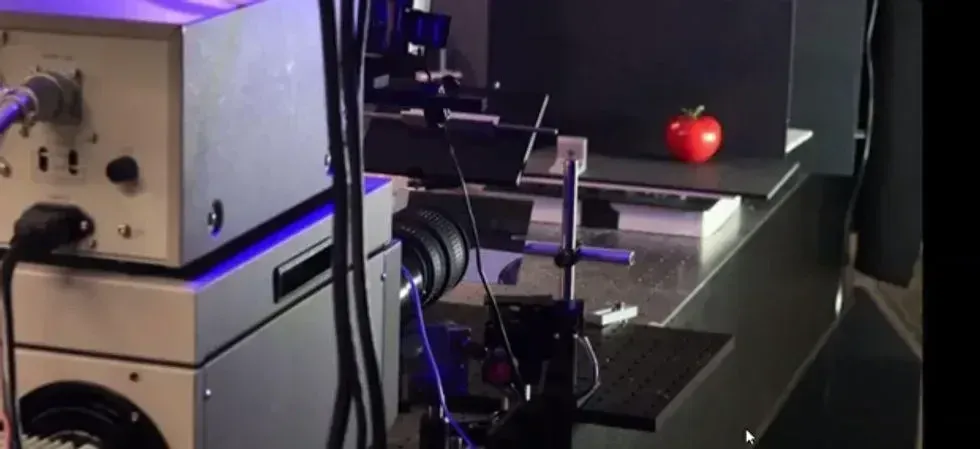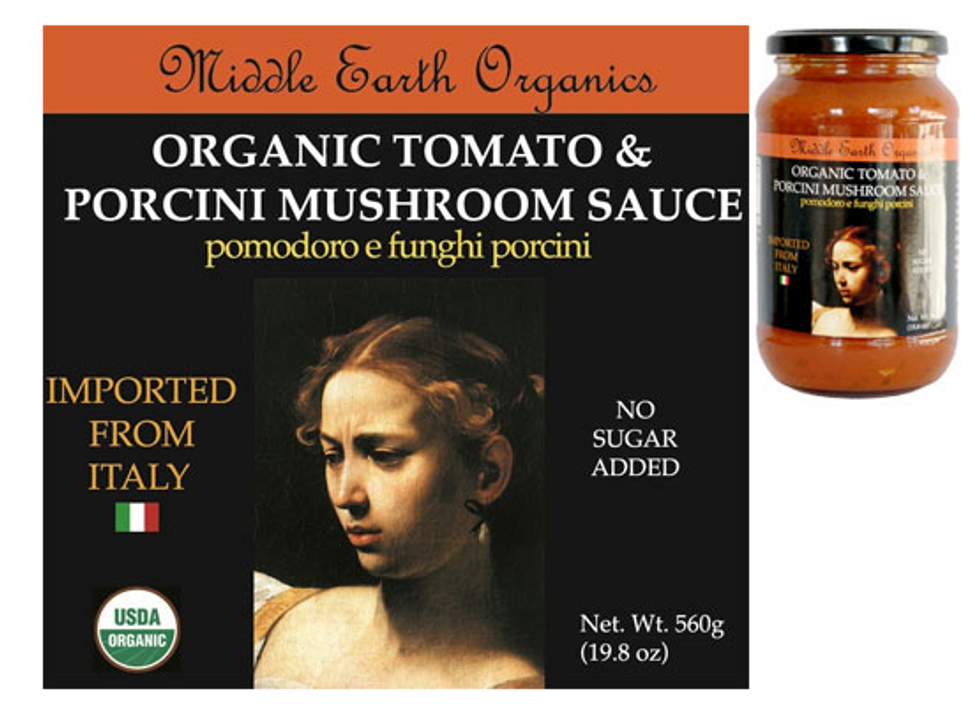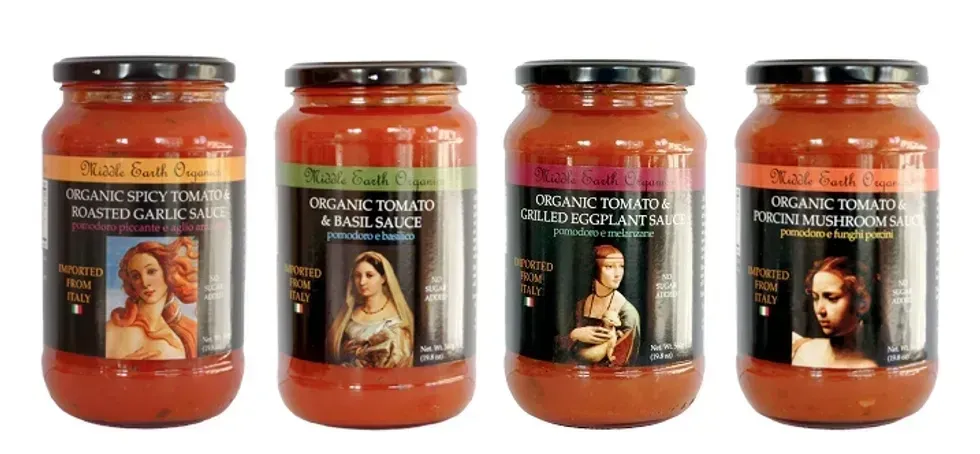Over the last few decades, Brooklyn as a “brand” has become shorthand for young, creative, and talented. One design group that’s managed to stand out in this landscape already saturated with innovative ideas and individuals is Greenpoint’s Tri-Lox studio and millworks. Known in both the fabrication and fine art communities for turning discarded resources—like wood from old barns and demolished buildings—into stunning, handmade designs, their diverse client base ranges from art museums to restaurants to pop stars. One of their most recognizable projects thus far has been a series of interiors for NYC’s fast expanding cult burger joint Shake Shack that, beginning next month, will include a bespoke wood-paneled room for a new London location.
The group consists of childhood friends from Minneapolis: Ellis Isenberg, Alexander Bender, Tim Knight, and Sam Welch, collaborating with Ohio-born fabricator Graham Steffen. Before forming Tri-Lox, Isenberg worked as a manager at Build It Green! NYC (BIG!NYC), a Queens refurbishing center and local institution, giving life to broken and discarded furniture and interiors. On the weekends, Bender would join him in the workshop to tinker. Starting out with smaller projects, they first opened Tri-Lox in 2011 with Welch. After enlisting Knight, they began to turn excess wood-–often culled from decaying barns in Connecticut and upstate New York—into coffee tables, museum installations, and even a chair for Lady Gaga. In the process, Tri-Lox created something akin to the craftsmen's guilds of medieval and Renaissance times, providing a promise of quality rarely seen in our current pre-fab era, and expanding a network of local artisans on speed dial.
Though they’ve worked on a wide range of projects, their most popular by far has been the Skyline Collection, interiors and industrial design items made from demolished water towers. Recently we chatted with the team about the collection in their studios, located in what’s become known as the “fabrication center” of Northern Brooklyn—a series of industrial backstreets that act as a barrier between residential Greenpoint and the shipping docks of nearby Newtown Creek. We sat in their main office, high above the still bustling mill, sharing a post-work Budweiser, and as the sawdust settled, Bender discussed the popularity of the Skyline series.
“I think people can really identify with [the collection] because the water towers provide such an iconic image. They’re an important and highly recognizable part of the NYC infrastructure.” In New York City, buildings higher than six stories need water towers for cooling and hydration distribution and, over the last century or more, they’ve become as much a part of the New York skyline as the Empire State Building. Since plastic or metal towers would be significantly pricier, and harder to maintain, wood has always been the default material. Water towers need to be refurbished every 30 to 35 years, creating a surplus of the discarded, rare, high-quality wood (often California redwood and Alaskan cedar) that is highly prized for furniture design even once it's lost its construction value.
Building upon their experience with BIG!NYC, Bender and Isenberg learned how to source these precious materials, even creating a mill and kiln within their Greenpoint studio. Often, the team will go on mini “road trips” throughout the Northeast, gathering up rare, discarded wood and deciding how it will be repurposed. Because they are one of few studios in the country to hone in on this highly recyclable wood, they also provide bulk orders to other design businesses.
At the core of Tri-Lox’s success has been the group's long-term friendship, and mutual respect. “The friendship we have has been very important to how we developed our design sensibility,” says Bender. Both Bender and Ellis come from highly creative families, their mothers first met during art education residencies at the Minneapolis College of Art and Design, Isenberg’s as a drawing instructor and Bender’s as a sculptor working with bronze and hot patina. Welch, whose father has maintained a top cabinetry shop in Minneapolis for decades, apprenticed as a cabinet-maker throughout high school. According to Isenberg, “everybody sort of grew up around design and building.” The team was curious and inventive from the beginning. “We were in the basement, making and trying different things out, and going to the hardware store and learning about construction—messing around as kids is sort of the origin of our working together.”
Their related backgrounds have provided fertile ground for the development of projects. Knight, who helped build TV and commercial sets in Minneapolis, works with custom project manufacturing and set design; Welch is in charge of production on the mill and custom project fabrication; Isenberg and Bender have honed their previous experiences with BIG!NYC to co-ordinate, often managing the workshop’s complex construction initiatives. “The fact that we all have a different skill-set, and different strengths, allows us to lean on each other,” says Isenberg, whose experience also includes time spent at Columbia University's Graduate School of Architecture and Planning.
Rather than straining their longtime relationships, working together has brought the group much closer. “There's conventional wisdom that believes ‘you don’t start a business with your friend. If you go into business with your friends, you won't be friends for long,’” says Isenberg. “But I think the more open and organized you are—it doesn’t necessarily have to be that way. Starting a business with your friends can even strengthen your friendship. The better you understand your own role, and your own strengths, the more fruitful those relationships will be.” This bond also provides a foundation for projects that could easily overwhelm a less cohesive team. “We don't clock in and clock out,” says Isenberg. “The flexibility to call each other, and work out any type of issue we have with a project, or even float an idea whenever you need to, is huge. One of the things I always say is, try to put together a really strong team, because there's no idiot’s guide to starting a company. The fact that we know essentially everything about each other, and understand each other's motivations and fears and habits is just a huge asset.”
Along with their work on Shake Shack International, they are also involved in several other initiatives, including local restaurants, a new Rag & Bone clothing store on Long Island, and a composting and design program with the Queens Botanical Garden slated for later this year. One of the most exciting projects, however, will be the introduction of an in-studio retail space with drop-in hours. Starting this spring, Tri-Lox workshop and mill will welcome visitors, potential collaborators, and even customers interested in commissioning small batch and artisanal projects. Those visiting will be able to tour the giant kiln, learn about reuse and recycling of materials, and even buy goods like homemade textiles and décor items, created by the group’s vast network of makers and artists. And if you’re lucky enough catch them in between road trips, you might even be able to grab a Bud and spend some time with this dynamic group of friends.
To see Tri-Lox at work, watch this video by Brooklyn Spotlight:
[/vimeo]
















 TikTok · Bring Back Doors
TikTok · Bring Back Doors 



 Label for Middle Earth Organics' Organic Tomato & Porcini Mushroom Sauce
Label for Middle Earth Organics' Organic Tomato & Porcini Mushroom Sauce "Judith Beheading Holofernes" by Caravaggio (1599)
"Judith Beheading Holofernes" by Caravaggio (1599)